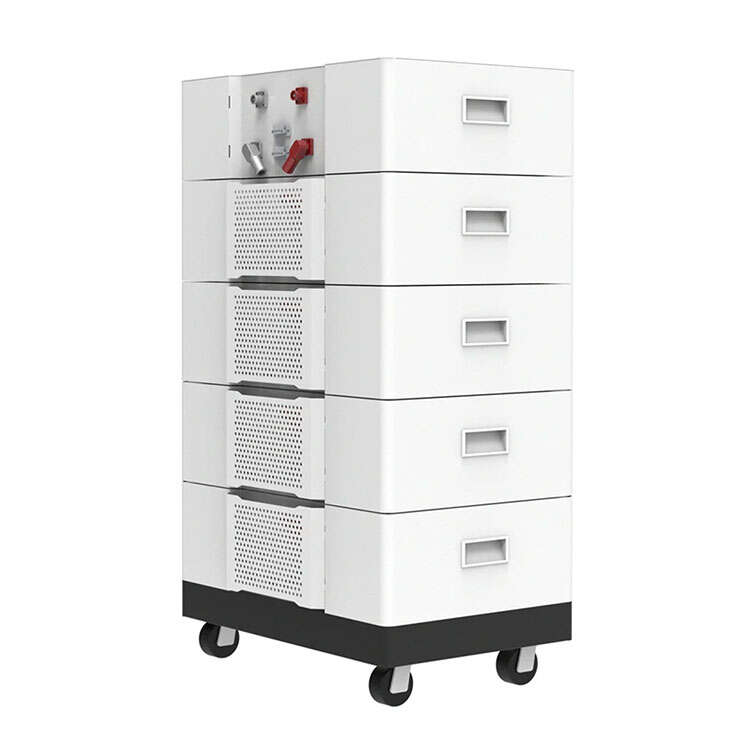Email format error
Email cannot be empty
Email already exists
6-20 characters(letters plus numbers only)
The password is inconsistent
Email format error
Email cannot be empty
Email does not exist
6-20 characters(letters plus numbers only)
The password is inconsistent


Stackable Battery Storage: The Future of Energy Solutions
In the ever-evolving world of renewable energy, stackable battery storage has emerged as a revolutionary solution for both residential and commercial energy needs. As solar and wind energy become more prominent, the demand for efficient energy storage systems has skyrocketed. Stackable battery storage addresses this demand with a flexible and scalable design that caters to a wide range of energy requirements.
In this blog, we will explore the key benefits, applications, and future potential of stackable battery storage. We will also delve into why this technology is becoming increasingly popular, especially for those looking to make their homes or businesses more energy-efficient and sustainable.
What is Stackable Battery Storage?
At its core, stackable battery storage is a modular energy storage solution. Instead of relying on a single, large battery unit, users can "stack" smaller battery modules to meet their specific energy needs. This design provides flexibility, allowing users to start with a smaller system and gradually increase capacity as needed.
For instance, homeowners with solar panels can store excess energy during the day and use it during the night, reducing their reliance on the grid. Similarly, businesses can stack battery modules to ensure they have a stable energy supply during peak demand periods.
How Does Stackable Battery Storage Work?
The beauty lies in its simplicity. Each battery module is designed to connect seamlessly with other modules, allowing for easy installation and expansion. These systems are typically compatible with solar panels and other renewable energy sources, enabling users to store energy generated during the day and use it during times of high demand or when renewable sources aren't generating power.
The system operates through a battery management system (BMS) that monitors and regulates the energy flow between modules. This ensures that the system operates efficiently and safely, preventing overcharging or deep discharging, which can damage the battery over time.
Benefits of Stackable Battery Storage
There are several compelling reasons why stackable battery storage is gaining traction in the renewable energy sector. Here are some of the most notable advantages:
1. Scalability
One of the main benefits is its scalability. Users can start with a smaller energy storage system and add more modules as their energy needs grow. This is particularly beneficial for homeowners who may install solar panels incrementally or businesses that experience seasonal changes in energy demand.
For instance, a wholesale 38.4kwh stackable battery could be an ideal solution for businesses looking to store large amounts of energy for later use.
2. Space Efficiency
Traditional battery storage systems often require significant space, which can be a drawback for homeowners and small businesses. However, stackable battery storage systems are compact and can be easily integrated into existing infrastructure. The vertical stacking capability means users can maximize storage without taking up valuable floor space.
3. Cost-Effective
Rather than investing in a large, expensive battery upfront, users can start small with stackable battery storage and expand over time. This approach allows for better budgeting, as the cost of additional modules can be spread out. Additionally, as technology improves and production scales, the cost of these systems is expected to decrease, making them even more affordable.
4. Reliability
With a modular design, stackable battery storage ensures a reliable energy supply. If one module encounters an issue, the system can continue to function using the remaining modules, minimizing downtime. This makes it an ideal solution for businesses and homeowners who cannot afford energy interruptions.
5. Improved Energy Independence
By storing energy from renewable sources like solar and wind, users can reduce their dependence on traditional energy providers. This not only results in cost savings but also provides greater energy security, particularly in areas prone to power outages or regions with fluctuating energy prices.
Applications of Stackable Battery Storage
As the benefits become more widely recognized, its applications continue to expand across various sectors. Here are a few examples of where this technology is being utilized:
1. Residential Energy Storage
Homeowners are increasingly turning to stackable battery storage to complement their solar panel installations. These systems allow them to store excess energy generated during the day and use it during the evening or in case of a power outage. This not only reduces their reliance on the grid but also lowers electricity bills.
2. Commercial Energy Solutions
Businesses, particularly those in energy-intensive industries, can benefit from stackable battery storage by storing energy during off-peak hours and using it during peak demand periods. This can lead to significant cost savings and improved energy efficiency. Additionally, businesses that experience power outages or unreliable grid supply can use stackable battery systems as backup power sources.
3. Off-Grid Applications
For those living in remote areas or locations with limited access to the grid, stackable battery storage provides an efficient and reliable energy solution. Paired with solar panels or wind turbines, these systems can offer complete energy independence, making them ideal for off-grid cabins, farms, or remote communities.
4. Emergency Backup Power
In areas prone to natural disasters, stackable battery storage systems can provide critical backup power. Hospitals, emergency shelters, and other essential services can use these systems to ensure uninterrupted power during emergencies, safeguarding both operations and lives.
The Future of Stackable Battery Storage
The future is incredibly promising. As the demand for renewable energy continues to rise, so too will the need for efficient and scalable energy storage solutions. Here are some trends and advancements that we can expect to see in the coming years:
1. Increased Efficiency
As technology evolves, stackable battery systems will become more efficient, storing more energy in smaller, more compact modules. This will reduce the overall cost of energy storage and make these systems even more attractive to both residential and commercial users.
2. Integration with Smart Grids
As smart grid technology develops, stackable battery storage systems will play a crucial role in balancing energy supply and demand. These systems can store energy when supply exceeds demand and release it during peak times, helping to stabilize the grid and reduce reliance on fossil fuels.
3. Energy Storage as a Service
In the near future, businesses and homeowners may not need to purchase their own stackable battery systems. Instead, energy storage could be offered as a service, where users pay a monthly fee to access stored energy. This model could significantly lower the barrier to entry for energy storage, making it more accessible to a wider audience.
4. Government Incentives
Governments worldwide are offering incentives to encourage the adoption of renewable energy and energy storage solutions. As these incentives grow, more homeowners and businesses will likely turn to stackable battery storage to meet their energy needs.
Conclusion
Stackable battery storage represents the future of energy storage solutions, providing flexibility, scalability, and cost-effectiveness for a wide range of users. Whether you're a homeowner looking to store solar energy or a business needing a reliable backup power source, the battery storage offers a customizable solution that can grow with your needs.
With the rise of renewable energy and the push for greater energy independence, it's clear that stackable battery storage will play a vital role in the global shift toward sustainability. As technology continues to advance and costs decrease, we can expect to see even more widespread adoption of these innovative energy systems.
